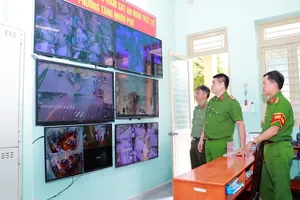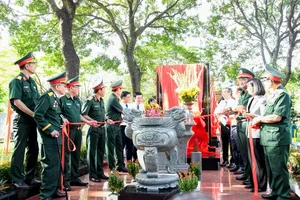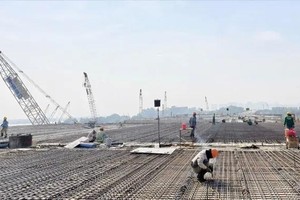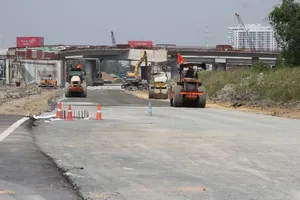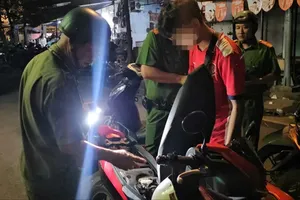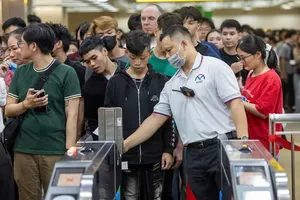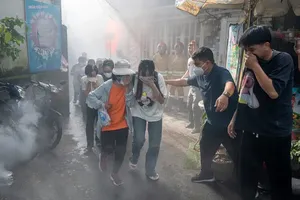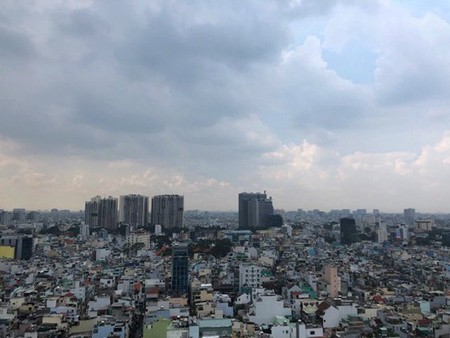
One obvious reason comes from the urbanization process in HCMC. Several manufacturing plants, construction sites, along with the huge number of existing vehicles in the city, are releasing exhaust fumes into the air. However, implemented solutions to reduce this state are not truly effective.
According to Associate Prof. Dr. Nguyen Dinh Tuan, former Head of the HCMC Environmental Protection Agency (under the HCMC Department of Natural Resources and Environment), the cloudy state and high humidity as well as urban heat island in the last few days in the city result in the inability of polluted air to travel upwards as normal. This severely affects residents’ health.
Sharing the same opinion, Associate Prof. Dr. Ho Quoc Bang from the Institute for Environment and Resources reported that traffic has caused 99 percent of the total CO release of HCMC, not to mention the harbor activities on Saigon River, which contribute 15 percent to the total SO2 release and 5 percent of dirt.
Predictions reveal that in 2025, the O3 level at the one-hour average and eight-hour average in HCMC will be 1.15 times and 1.2 times as high as the current levels (at 230µg/m3 and 144µg/m3), respectively. The CO concentration will be 1.05 times as high as the Vietnamese standards, and the NO2 concentration 1.5 times. Only the SO2 one can meet the standard.
In 2030, the state will be much more alarming. All concentrations of exhaust fumes will surpass the Vietnamese standard, the CO one by 1.7 times, the O3 by 1.15 times, the NO2 by 1.67 times, and the SO2 by 1.02 times.
Despite this disturbing estimate, most forecast tasks and proposed suggestions to amend the situation are not effective at all. There used to be more than 10 automatic environmental monitoring stations, yet they are now out of use due to their serious damages.
Therefore, exhaust fume concentrations in HCMC are now manually calculated in 20 locations, most of which can only monitor noise level and dirt. What is more, since these stations are built in the inner city only, they cannot evaluate the true state of air pollution in HCMC precisely.
Realizing the solemnity of this problem, the HCMC Department of Natural Resources and Environment has already proposed the city to fund the project to improve the environmental monitoring ability, costing VND500 billion (US$21.56 million). Accordingly, until 2020, there would be 7 automatic monitoring stations to stably evaluate air quality, 2 monitoring stations for water quality in Saigon River and Dong Nai River.
Simultaneously, 15 current monitoring stations for underground water are to be upgraded, along with the construction of 3 new ones. Investment in proper devices for the quality control room, the modernization of analysis tools for environment and resources, and the administration system for automatic monitoring networks should also be considered.
Later on, the Department hopes to install 8 more monitoring stations for water quality in Saigon River and Dong Nai River, 10 monitoring stations for underground, and 5 monitoring stations for depression. A new network to monitor sewage wherever the volume reaches 1.000m3 per day / night is expected to be built as well.
Experts also suggest that to improve the environment in HCMC, the municipal authorities should urgently upgrade necessary devices and tools while constructing new monitoring stations in suitable locations to handle all received data and deliver timely warning for the public.
One more possible solution would be for HCMC to control the development of private vehicles and their exhaust fumes, to encourage public transportation, to introduce clean fuel as well as electrical vehicles. The city is also recommended to invest in more automatic monitoring stations and online information transmission, followed by publicly reporting received data to the community.
